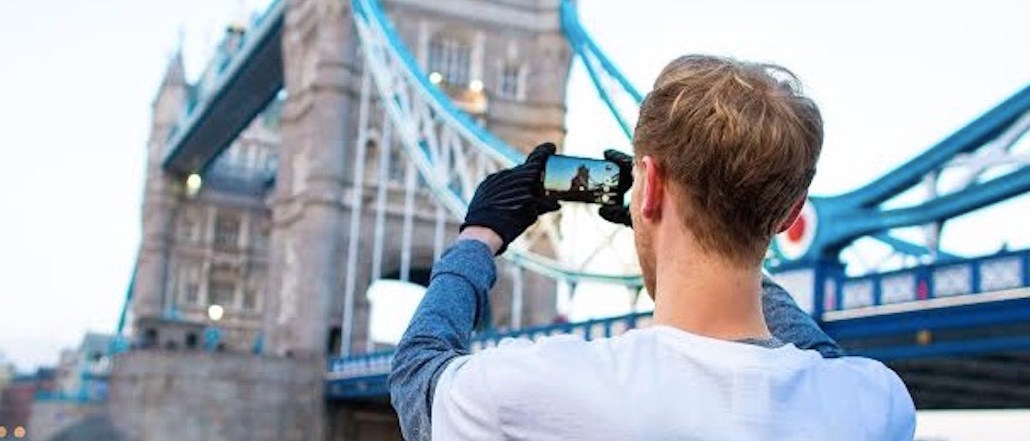Save 50% on a 3-month Digiday+ membership. Ends Dec 5.

Time Out has hit on a winning formula for monetizing its native advertising distribution — one that it is currently exporting from London to its titles in Paris and New York.
Like most publishers, its in-house content shop has created editorial-mimicking ad formats for years, but in the last six months it has carved a totally new direction for creating commercial content and distributing it. Experimenting with new ad units which offer a richer creative experience while focusing on just serving contextually relevant native ads has seen client campaign results “rocket,” said Adam Harris, international creative director at Time Out. In the process, the publication has opened a promising new revenue stream for the business.
The publisher claims it can now charge premium rates and is predicting half its digital ad revenues will come from native advertising in 2016, up from 33 percent in 2015.
“When it comes to programmatic in particular, class-one inventory isn’t being sold as prevalently as it used to be, so we have to look at other premium sources of revenue,” he said. “This could open a massive new revenue stream for us because we can charge more premium rates for native campaigns.”
A breakdown of its approach.
Contextual relevance over volume
About six months ago, Time Out began working with native ad supply side platform ShareThrough to run some experiments with existing clients Booking.com, Sony and eBay. By plugging Sharethrough into its ad server (it uses Doubleclick), it started serving commercial content that was contextually relevant to the editorial with its pages and the interests of the readers visiting those pages.
Unsurprisingly, from playing around with different types of creative, it found that people were more likely to click on editorially led, entertaining content over more direct marketing methods such as competitions or branded messages. They had to be contextually relevant to the interests of its audience. By doing both, it saw click-through rates (CTRs) surge.
Ad position: web_incontent_pos1
Italian beer brand Peroni, for example, saw a hefty CTR lift for a campaign that promoted Italian lifestyle in London. Time Out editorial teams worked with its content studio to create messaging and articles, but by ensuring the ads ran within the culture and arts pages of the site, rather than at random, the ads received a 6.1 percent average CTR within a month, with average dwell time 3.2 minutes, according to ShareThrough data. The average industry CTR for a display ad is a paltry 0.06 percent, so less than one click per 1,000 impressions, according to benchmarks from Smart Insights.
The campaign did even better on mobile, with half the 1.2 million overall impressions served via mobile devices getting higher CTR and engagement than desktop: 2.5 percent versus 1.6 percent.
Richer native ad formats
Time Out has been developing four new formats, which are also contributing to high engagement and CTR rates. It’s had some early success with a “Now Showing” format, which works particularly well for audio-visual clients, who can include trailers for new releases. Film studio 20th Century Fox used the new format to help promote “Joy,” starring Jennifer Lawrence. “This is something alternative for film clients. The format let us show the trailer, give a synopsis of the film and link it through to the editorial around the film,” said Harris.
The campaign just ended yesterday, so it’s a little early to release full figures, though average CTRs were 1.4 percent within 2 weeks, according to Harris.
Ad position: web_incontent_pos2
He said it plans to keep new format development rolling and has a fifth “in-feed” one pending, which once launched, will help Time Out free up more inventory higher up the page for the native ads to run.
Global extensions
Time Out’s U.S. and French offices are benefiting from the London team’s experimentation. Last November, the New York team launched the same native capabilities for campaigns with Airbnb and Jaegermeister, already yielding engagement rates at an average 3.4 percent CTR, according to Harris.
The Paris office is also adopting the same approach and the first campaign across all three international outlets will go live shortly for Barcelona Tourism.
Using drones for native ad content
It’s not just on the distribution side that Time Out has been busy. It’s also testing exciting technologies to make its content stand out. Publishers have been experimenting with drones for a while, but there aren’t many examples of their content studio arms using the tech for their own content generation.
Last month, Time Out worked with production house Black Bee Films to film footage of sunrises (on behalf of a client it can’t name yet) in London via drone. You can view the video below. Londoners love looking at dazzling images of their beloved capital and this video tapped into that, and was seeded organically on YouTube and Facebook, notching up 800,000 views within four days on the latter. Although it filmed the video as a pilot for the client, the plan is to go live with a larger campaign featuring drone-filmed creative in March.
More in Media

Digiday+ Research Subscription Index 2025: Subscription strategies from Bloomberg, The New York Times, Vox and others
Digiday’s third annual Subscription Index examines and measures publishers’ subscription strategies to identify common approaches and key tactics among Bloomberg, The New York Times, Vox and others.

From lawsuits to lobbying: How publishers are fighting AI
We may be closing out 2025, but publishers aren’t retreating from the battle of AI search — some are escalating it, and they expect the fight to stretch deep into 2026.

Media Briefing: Publishers turn to vertical video to compete with creators and grow ad revenue in 2026
Publishers add vertical video feeds to their sites to boost engagement, attract video ad spend and compete with news creators.
Ad position: web_bfu



